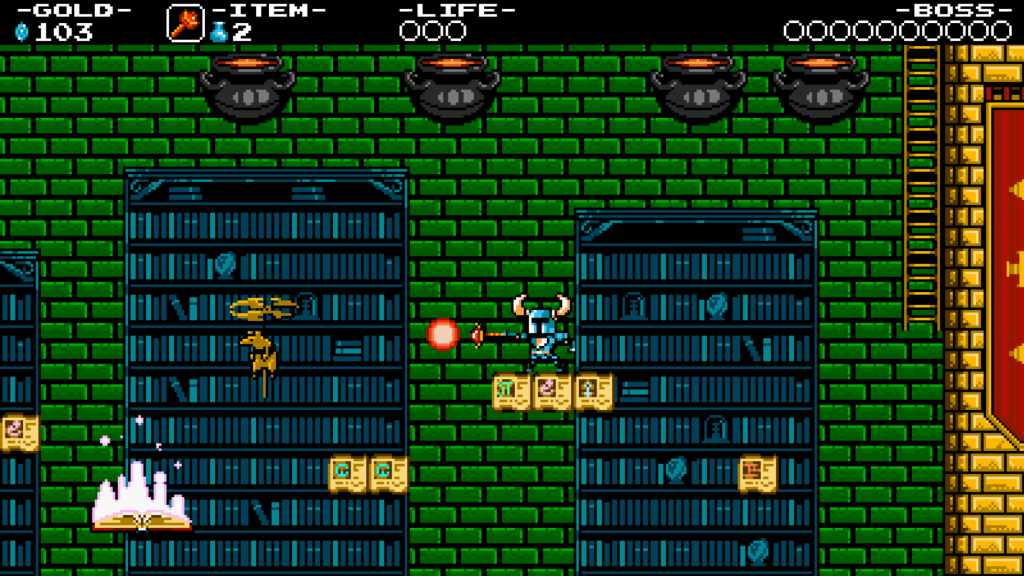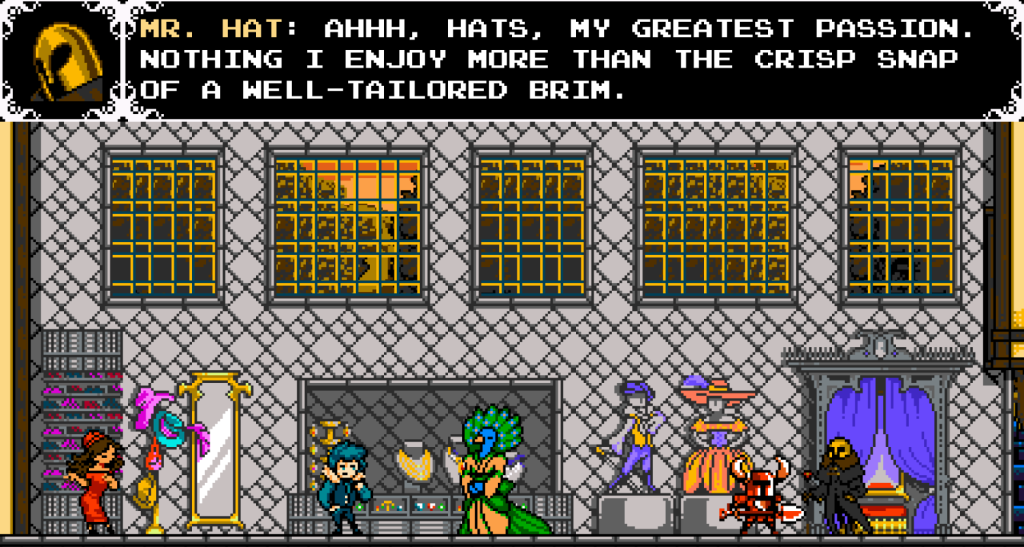Read Part 1 First!
I’d say most of the game’s surprises pretty much disappear after the halfway mark, and with it the challenge. There’s almost too many secrets you can find in a level, and you start understanding how they work almost immediately. See an unusual block in a wall? Hit it, and goodies will come out. What first seemed a pretty novel way to let players explore quickly became tedious as you could pretty much see the tells in advance (72% completion rate, and I didn’t even try). The stages, as I said, have no sense of pacing and just seem to meander along after a while. They each fall into discrete chunks in my mind; instead of a cohesive area, they appear as self-contained chunks inside of a bigger stage. The unity is lacking. Maybe that’s just the checkpoint system talking; I never felt encouraged to become consistent, so I never really learned the stages, heard their awesome music, or marveled at the coherency of their themes like Mega Man lets me. Since the game placed no trust in my ability to “get it right”, Yacht Club Games must have adjusted their design in response. In a phrase, it gives you the feel of NES games, a dose of giant nostalgia for a modern audience.
What you’re left with, then, is a pretty competent action platformer with an extremely awkward combat system. There’s no doubt that Shovel Knight controls well. Other than getting used to an extremely strange, jump arc (he goes up fast and descends very slowly), every stage does present a set of neat challenges. Wind, gravity, light, water, and various other elements come into play, and every so often you see a real neat flash of inspiration. The sequence at the end of Propeller Night’s stage, for example, makes really excellent use of wind effects, while The Tower of Fate contains some very traditional, yet definitelly well-designed, challenges (the moving platform stuff is just all over the place). Most stages make extensive use of the pogo, although less than I would like, but what’s there is just as enjoyable as in Ducktales. I wish they allowed for the alternate pogo controls (i.e., hold jump plus down), since that allows for greater precision; for whatever reason, Yacht Club Games decided that you should stay in the pogo for the entirety of the jump unless you do a jump attack, which feels horribly awkward. Ducktales already fixed this guys!
The combat, on the other hand, feels incredibly strange. Shovel Knight uses, you guessed it, a shovel, and he uses the shovel to hit enemies in melee combat. Hitting things with a shovel knocks him back, though, so you often need to watch your footing. As well, geting used to the shovel’s range takes some time and effort; it’s not as clear as I would like. Given that some enemies block attacks and Shovel Knight has a notable problem with hitting anything above his head without Magic abilities, and things feel strange when you play it.
The same is true of Castlevania, surely, but the enemy design lacks the integration with level design of its forbears. Castlevania says, very early on “don’t get hit”; Shovel Knight borderline encourages it, since you can’t avoid it in most situations. Magic abilities supplement your default attack, and usually they cover the angles that Shovel Knight can’t. Even so, you often get hit fighting regular knights, as they block attacks and sometimes you just go too near them. They become trivial with the charged shovel attack, but before then it’s incredibly difficult to kill them without getting hit yourself. The pattern’s just too random to predict in most cases, and these kinds of platformers thrive on consistent patterns.
That, weirdly enough, isn’t true of the bosses. You don’t get boss weaknesses like Mega Man, but just about every boss falls quickly to the pogo attack; I’d even say it’s over-powered, as King Knight fell to the might of the shovel pogo in about ten seconds. It didn’t take me long to discover that, in almost every case (Treasure Knight and Plague Knight excluded), pogo rules over all, and I could usually bounce four or five times off their head. It’s even better if you take a hit to go through their dangerous attacks, as invincibility frames render you invulnerable for far too long. No doubt, I think all the boss fights hold some cool designs and patterns, but I could often circumvent them through cunning use of pogo (not to mention the incredibly overpowered Phase Locket).
Outside of the actual game parts, there’s charming townsfolk and a strange sense of humor and a tiny plot to go along with it. If you like those sort of things, this will drive right up your alley and park itself in your mind. As for me, they were nice, but didn’t really add anything to the experience that a bunch of other indie platformers didn’t already try to do. Is it a meta-commentary on how weird the townsfolk were in Zelda II and Castlevania II? Beats me. All I know is, this game has some weird stuff in it if you’re reading the text.
One thing I can say, however, is that Shovel Knight does feel like a labor of great craft and love for the source material. You can tell fans of the genre made this game, even if they stumble in some parts along the way. For that I can commend them. They can certainly improve this formula substantially, and if the sales give us any indication, they will make another Shovel Knight, as well as adding new playable characters to the original. I’m hopeful for the future.
In the present, though, I can’t say I love Shovel Knight, and that makes me more than a bit sad. I wish I could love it as much as its creators and fans seem to love it, but there’s just too many niggling issues here and there that distract from the game’s better qualities. I like it, but it’s neither good nor bad, and that’s kind of a shame. I just don’t like that the media prop this up as a “revival” of NES games and “NES Hard”. No, no, and NO. It isn’t. It’s a modern game with a graphical aesthetic from Nintendo’s golden goose, and that’s really the long and the short of it. The basis is there for something great, but it falters in the execution. Anyone saying otherwise props up false hopes and presents a skewed version of the past.
I am against those who prophesy false dreams, as should you. Go play the older games and see how they compare; I’m sure you will see things look far different from the top, rather than viewing from the base of the mountain.
25 “I have heard what the prophets have said who prophesy falsely in My name, saying, ‘I had a dream, I had a dream!’ 26 How long? Is there anything in the hearts of the prophets who prophesy falsehood, even these prophets of the deception of their own heart, 27 who intend to make My people forget My name by their dreams which they relate to one another, just as their fathers forgot My name because of Baal? 28 The prophet who has a dream may relate his dream, but let him who has My word speak My word in truth. What does straw have in common with grain?” declares the Lord. 29 “Is not My word like fire?” declares the Lord, “and like a hammer which shatters a rock? 30 Therefore behold, I am against the prophets,” declares the Lord, “who steal My words from each other. 31 Behold, I am against the prophets,” declares the Lord, “who use their tongues and declare, ‘The Lord declares.’ 32 Behold, I am against those who have prophesied false dreams,” declares the Lord, “and related them and led My people astray by their falsehoods and reckless boasting; yet I did not send them or command them, nor do they furnish this people the slightest benefit,” declares the Lord.
Jeremiah 23


